How I always know I’m home is the sound of the radio. Limbs sprawled across the leather backseat, à la manspreading, à la crime scene, in my dad’s car or a taxi. Frames of shipping containers, pale green lights inside the Western Harbour Tunnel, banyan trees, then skyscrapers and cobalt road signs strobe at me aggressively, an interrogation through the looking glass: “Don’t you remember who you are? Where you’re from?”
But 16 hours in the air always puts me in a temporary state of dissociation, until I hear: “香港電台,新聞報導⋯⋯早上7點由XXX報導新聞⋯⋯” (Radio Television Hong Kong News Report, it’s 7am and this is BlahBlahBlah speaking…), followed by the station’s immortal jingle (listen here). With the sound of Hong Kong radio, I’m yanked back into my body and the context of my existence; here I am again, as the child of my parents, as a child of this place. A place that has gone on and will go on, with or without you. Whether or not you listen, or leave, the radio is always there, with something being said, with something being sung.
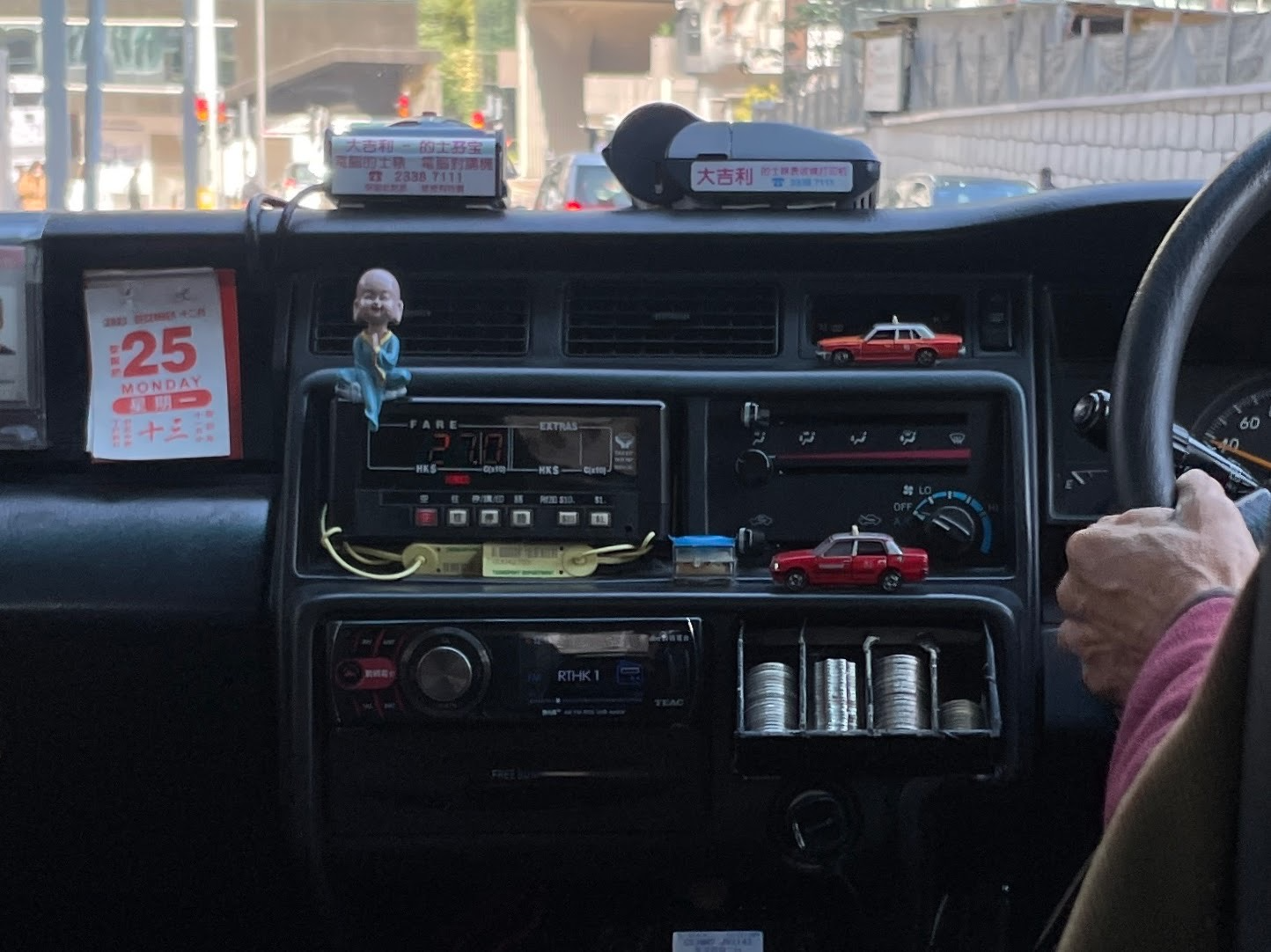
Scenes of afterschool minibus rides home saturate my memories of Hong Kong radio. With my iPod Touch battery depleted from an unfocused day spent speed-rolling virtual toilet paper (shoutout to the iDragPaper HD app), I’d focus on the airwaves, seated among a rotating cast of sixteen passengers on public transit, drifting in and out of sleep with my head against the window and the driver’s radio always playing at threatening decibels. Tuning in with strangers turns the passing world into a cinema, all of us synchronized to the same story while digesting it independently, quietly. Some of us were chewing Pocky sticks in school uniforms, some of us were wearing G2000 suits and had the day’s paper in hand, some of us were inspecting fruit just bought from the wet market. Some of us celebrating, some of us mourning, some of us falling in love, some of us just getting by, but all of us strangers with united heads, bobbing to the bumps of the road and the predictable chord progressions of Cantopop ballads. All of us, after a long day, heading home.
As of 2024, Hong Kong terrestrial (AM/FM) radio has three licensed broadcasters: Commercial Radio Hong Kong (commercial, operates three channels), Metro Broadcast Corporation Limited (commercial, operates three channels), and Radio Television Hong Kong (government-funded, operates eight channels). The most popular music-based channel, CRHK’s FM 90.3 (叱咤903), focuses on promoting local popular songs, and runs its own annual music awards ceremony based on airplay rankings of the previous 12 months. I remember ripping songs and soundbites from FM 90.3 using the record function in this tiny pocket radio player I had as a kid. Pre-YtMp3, pre-Shazam days.
Radio technology began as an experimental and scientific endeavor, but companies, as they do, soon recognized the advertising revenue potential of this mass communication technology in the 20s, which transformed radio into a commercial industry (capitalism wins). Then came the 60s and 70s and the accompanying countercultural movements, challenging traditional societal norms and economic structures. The idea that radio could, or must, survive as a non-profit, non-commercial tool for cultural expression and community development flourished. Community radio became the perfect platform for underrepresented groups to share information, music, culture and new perspectives. Grassroots resistance against the dominant mainstream transmissions.
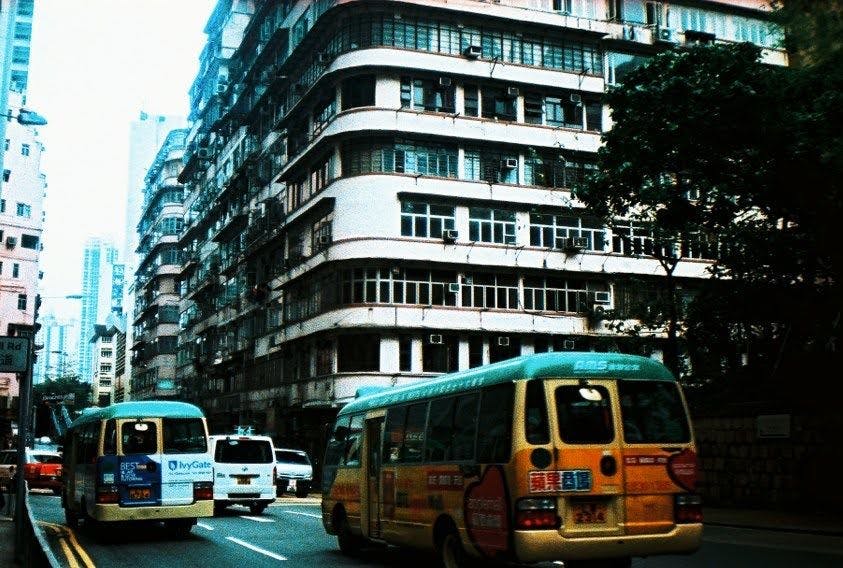
Nestled in the basement of luxury shopping mall Landmark in Hong Kong’s Central district, FM Belowground, founded by music and party collective Yeti Out in 2020, honors the punk ethos of pirate radio. It lives on as a physical and digital place to share and appreciate sounds and stories from Hong Kongers and out-of-towners alike.
(Ed. Note: In July, FM Belowground dismantled their physical space in The Landmark. The future is unknown. For now, FMBG is Still Live™️.)
“We launched during the pandemic, when a lot of promoters and DJs couldn’t play but wanted to continue sharing their music and art with an audience,” says Arthur Bray, Yeti Out cofounder and FM Belowground Music Director. The pandemic led to similar movements toward internet radio around the world, yielding a hyper-collaborative era between stations akin to 2000s blog rolls. Symbiosis.
“We’ve had residencies at Radar Radio, Rinse FM, Shanghai Community Radio and continue to do so on NTS,” Arthur continues. “When we tour, it’s usually hitting up the local community radio station in the day, then running it up at the club at night. Over the years, we’ve likely played on 20+ radio stations in different cities. Some very DIY and pirate, some more systematic and run like clockwork. Radio and club culture go hand-in-hand for us, like how record stores go hand-in-hand with DJs who are looking for new music. They’re all part of the same ecosystem of sharing and exchange. That ‘anti’ attitude and strong support for the local indie scene are at the core of our curation.”
FM Belowground broadcasts 24/7 online with eclectic programming. They just hosted N.E.R.D.’s Sha3 and Philip Leeds in a special Pleasures collab show and have a packed schedule of satellite pop-ups to look forward to. Their most streamed genres, says Arthur, “are the ones we make up to hack the Mixcloud algorithm, like gospel-grunge.”
Another radio station I always have as a pinned, unmuted tab in my browser is Hong Kong Community Radio. Founded in 2016 by Gavin Wong (also founder of Hong Kong underground label Absurd TRAX) and Davy Law (founder of future funk/city pop label Neoncity Records), the radio station had a physical home in Foo Tak Building (an inconspicuous, communal artist “village” that offered subsidized rent to artists) from 2017 to 2020, where touring or traveling musicians and DJs would drop by to do live shows. You’ll hear a diverse mix of genres on HKCR, but the most popular genres streamed are electronic, ambient, experimental and techno.
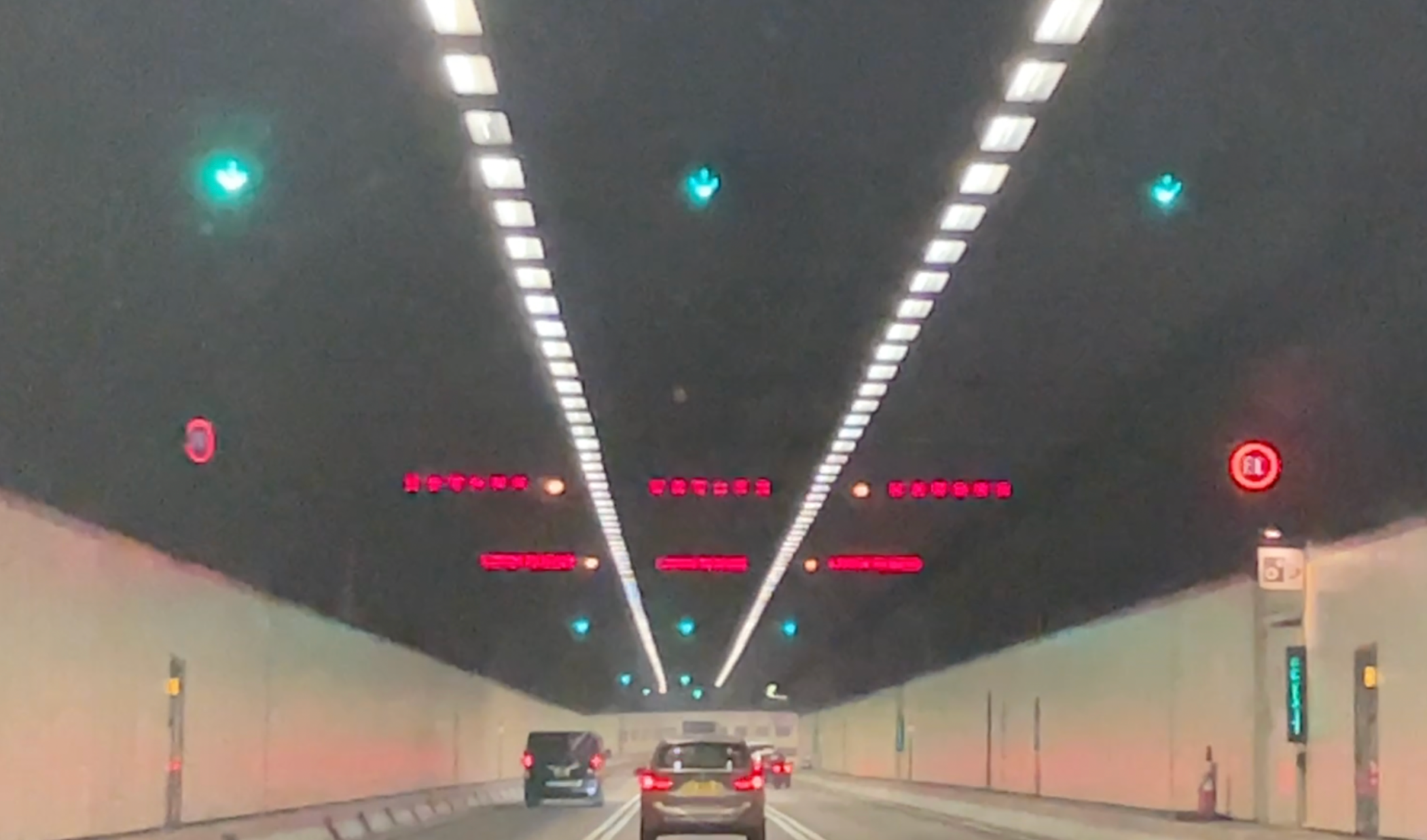
(I did a couple HKCR shows back in 2020 where I shared music I was listening to and read out people’s love notes and song dedications that were DMed to me on Instagram. With closed borders, travel restrictions and partial lockdowns, I was grateful for the chance to spin a web with others during that time. I’ll be doing monthly shows again as a resident starting next month in March, so you know, stay tuned.)
“As much as I miss our physical radio station,” Gavin says, “Online might be a blessing in disguise because we can reach a wider range of creators and listeners now. COVID-19 restrictions finally lifted in 2023 and we’ve since hosted a series of offline events.”
DJ, producer, writer, and musicology PhD Li Meng de Bakker (aka Mengzy) became a household name in the electronic dance music scene of Hong Kong in part through her radio sets at HKCR, FM Belowground, Eaton Radio, and RTHK Radio 3, on which she had her own show, “The Breakdown.”
“As a DJ, I love playing radio sets because it’s a different setting than the usual nightclub, rave or bar,” Mengzy says. “In nightlife settings, we have to react to the audience in the room. On radio, however, there’s no audience, so it’s a different energy. That encourages a different kind of creativity. I tend to be more experimental when I play on radio.”
The live chatroom on HKCR’s website leaves a beautiful record of strangers listening and reacting to songs together.
“In a way, community radio promotes collectivism,” says Gavin. “It’s all about sharing resources and making connections, whereas algorithms encourage retreating into an echo chamber. Community radio helps people from all walks of life intersect organically.”
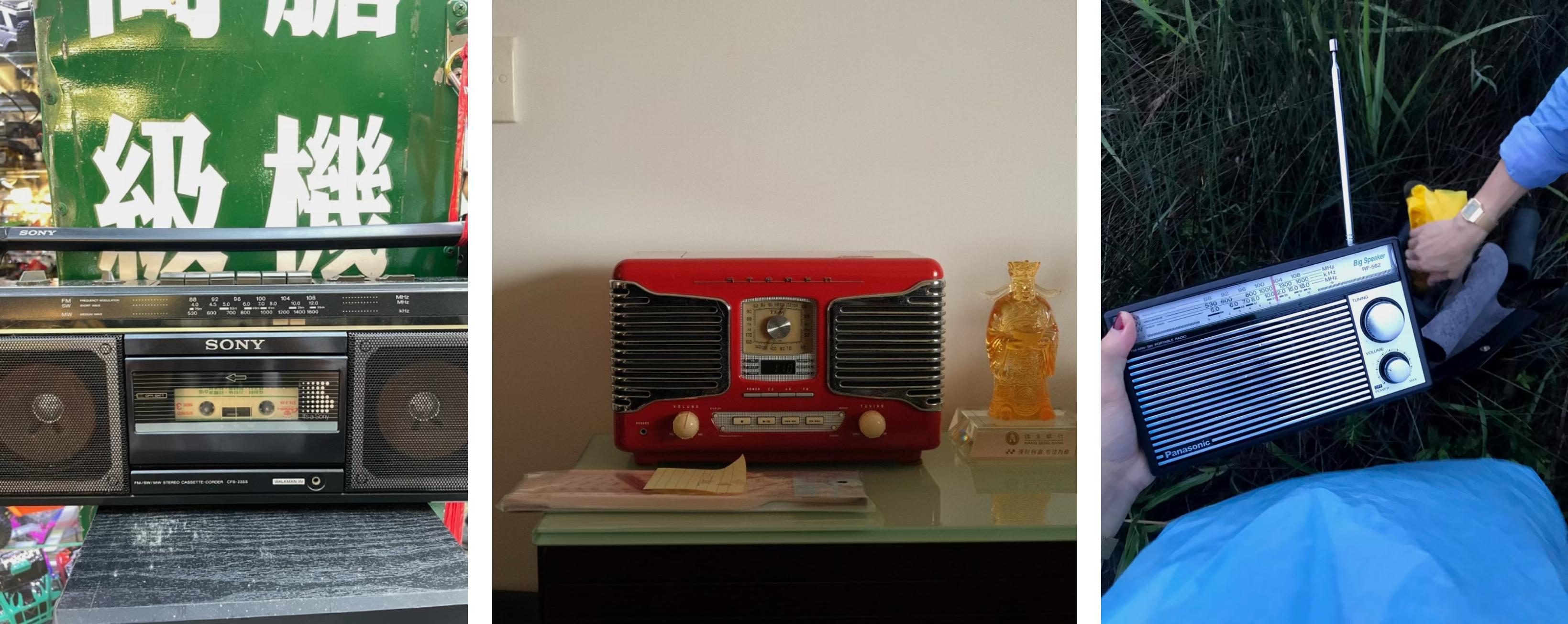
My Spotify Discover Weekly playlist is pretty sweet to my ears, but all that says is I approve of my own taste. Algorithms have helped me discover some of my favorite albums and artists. They’re convenient, efficient, and help us make sense of the volume of songs out there. They’ve also made me more passive and lazy, less critical and curious.
“If taste indeed must be deeply felt, requires time to engage with, and benefits from the surprise that comes from the unfamiliar, then it seems that technology could not possibly replicate it, because algorithmic feeds run counter to these fundamental qualities,” Kyle Chayka critiques in his book Filterworld: How Algorithms Flattened Culture.
A song recommendation holds more sentimental weight when it’s sent by a friend you haven’t spoken to in four months. This made me think of you, link. The messenger matters. Some song recommendations deserve to be put on a pedestal, like your favorite artist’s “Songs That Influenced The Album” playlist. The messenger changes the meaning of the message. You download them for offline listening, slow them down to transcribe parts, research the artist’s favorite artists’ favorite artists, obsess, fixate, trace the influences, interpret, study, commit to memory. You build context to house a song you love, then the house protects the song from escaping your life.
With The Algorithm, my listening history has become dominated by loose songs that are just cousins of songs I’ve saved last month, requiring minimal participation on my part as a listener. No surprises, no challenges. There’s heart and intention in human curation.
“The algorithm isn’t entirely bad,” says James Acey, Director of Music and Radio at Eaton HK. “I think if you feed the algorithm a diet replete with diverse content, it will output diverse content. Conversely, I’d like to think that internet community radio can really help you feel more rooted in a community by allowing you to keep up to date on what events are happening (if not around you, then in your musical scene), as well other kinds of music and ideas people around are engaging with.”
Eaton Radio sits between a craft beer bar and an udon shop in a hotel’s food court, a rectangular glass booth cradled by dark red mullions and adorned with vinyl record jackets, posters, zines and band stickers. This is where James and I host our monthly (ish) radio show Mystery Train, where we share songs we love and discuss things like: can we separate the art from the artist, is the first thought always the best thought, are lyrics or melody more important.
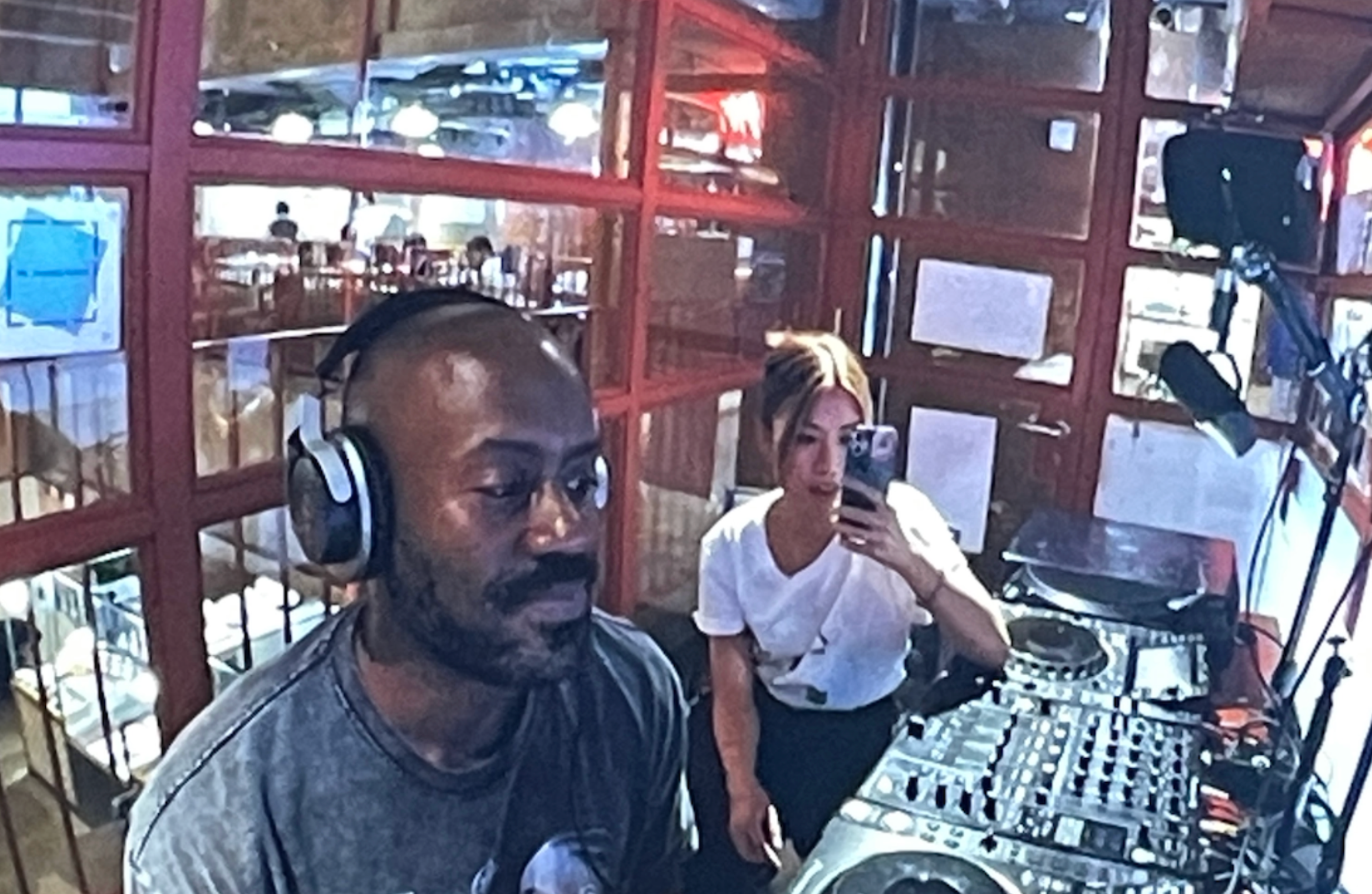
“For me, radio culture means awareness, synchronicity and community,” Acey adds. “I think it’s so incredibly beautiful for an airwave to meet someone wherever they are in space and time, both physically (maybe you’re stuck on the bus in traffic, or under the covers, or working a late shift washing dishes) and, for lack of a better term, spiritually. Spiritually, meaning the same sentence, song or sound affects you in an entirely different way to the next person listening to the same thing, because of the context of your life. The synchronicity may not be as immediate, moving from traditional (live) radio to internet (often archival) radio, but the access is powerful. It allows for so much sonic travel. That we can turn almost anywhere and immerse ourselves in quality, educational, enlightening material is a win.”
My favorite scene from In The Mood For Love is when the camera pans slowly between two neighbors (Mr. Chow, Mrs. Chan) and the wall between them. Their spouses are having an affair. The radio plays a song, dedicated from Mrs. Chan’s husband to her while he travels overseas “for work,” wishing her a happy birthday. Mr. Chow and Mrs. Chan listen separately, backs against the wall between them, swimming in their own melancholic yearnings. The radio is the same moon we look at.
Weaving through the Monday morning rush hour crowds in the MTR, I’m one of 1500-plus impatient, aggressive commuters. Shoulders collide, elbows jab, everyone hates everyone. Cantonese curse words are harsher than any other language. I protect myself from the hostility and loneliness of city life by muting it out, replacing commute ambience with whatever’s live from NTS. It’s midnight in London and the DJ’s selections of leftfield house and synth-pop are here to accompany me on my 9 a.m. train. I hate everyone a little less.
I toggle with the transparency mode of my earbuds, raising the faders of reality back up in my head. I’m at the mixing desk, blending field recordings of morning commutes and rare disco grooves I’m unfamiliar with. It’s a mix made possible by chance. The interaction between radio and real life is a romantic chance encounter. Albeit from different angles, the radio is the same moon we look at.




